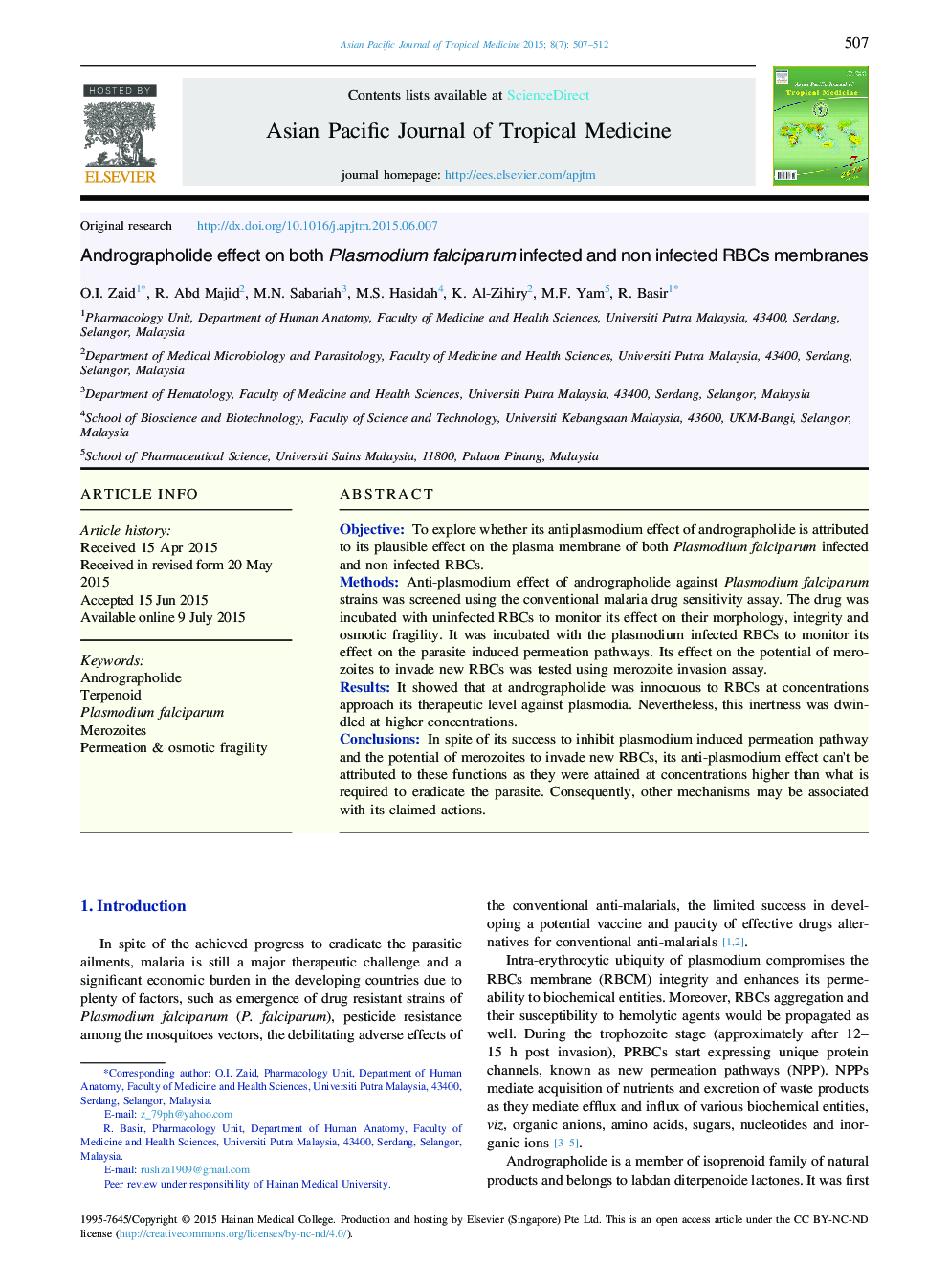| Article ID | Journal | Published Year | Pages | File Type |
|---|---|---|---|---|
| 3455220 | Asian Pacific Journal of Tropical Medicine | 2015 | 6 Pages |
ObjectiveTo explore whether its antiplasmodium effect of andrographolide is attributed to its plausible effect on the plasma membrane of both Plasmodium falciparum infected and non-infected RBCs.MethodsAnti-plasmodium effect of andrographolide against Plasmodium falciparum strains was screened using the conventional malaria drug sensitivity assay. The drug was incubated with uninfected RBCs to monitor its effect on their morphology, integrity and osmotic fragility. It was incubated with the plasmodium infected RBCs to monitor its effect on the parasite induced permeation pathways. Its effect on the potential of merozoites to invade new RBCs was tested using merozoite invasion assay.ResultsIt showed that at andrographolide was innocuous to RBCs at concentrations approach its therapeutic level against plasmodia. Nevertheless, this inertness was dwindled at higher concentrations.ConclusionsIn spite of its success to inhibit plasmodium induced permeation pathway and the potential of merozoites to invade new RBCs, its anti-plasmodium effect can't be attributed to these functions as they were attained at concentrations higher than what is required to eradicate the parasite. Consequently, other mechanisms may be associated with its claimed actions.
